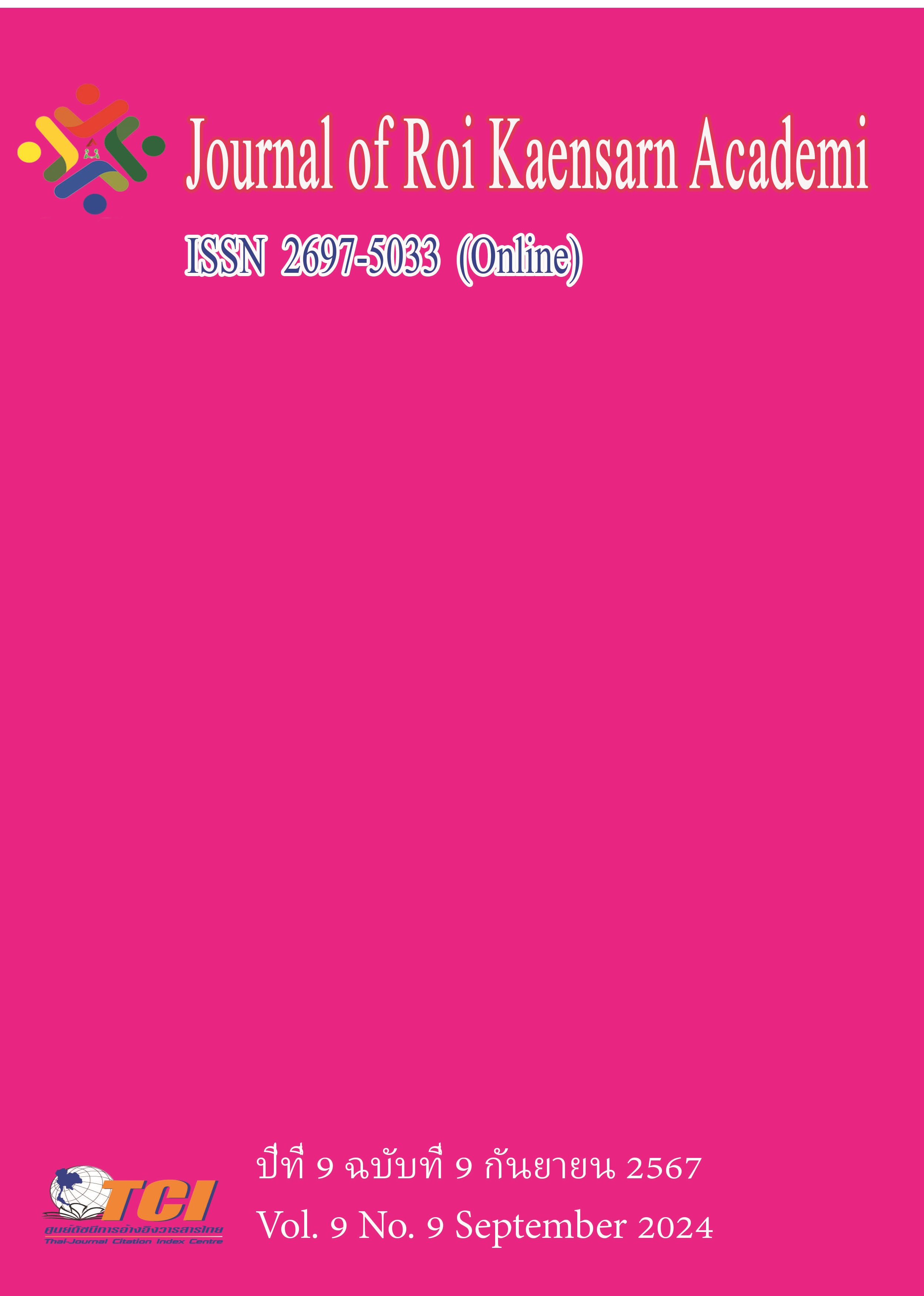Youth Dance: The Guidelines for Music Teaching Methods at Nanning Normal University
Main Article Content
บทคัดย่อ
Dalcroze's music teaching method and Comprehensive Musicianship teaching method are world-famous music teaching methods. This article aims to study Dalcroze and Comprehensive Musicianship teaching methods to guide students majoring at Nanning Normal University.
As it is phase 1 of the research, the researcher chose to use qualitative research by reviewing documents and receiving suggestions from experts. To gain knowledge about music teaching methods for music major students at Nanning Normal University. Conducted between June and September 2023.
The research results found that 1) The study compares Dalcroze's Eurhythmics and Comprehensive Musicianship instructional methodologies for middle school music classes. Eurhythmics is an interactive approach that combines music, improvisation, and discovery-based learning. Comprehensive Musicianship, an interdisciplinary approach, emphasizes skill development, historical background, singing correct pitches, sight-reading, and interpretive elements. 2) The "Youth Dance" lesson plan integrates Dalcroze's physical rhythm and Comprehensive Musicianship for middle school music classes. The lesson aims to enhance students' understanding of Uyghur music, develop singing abilities, grasp song moods, and appreciate youth. The lesson includes listening, visual, kinesthetic, and student-centered approaches. 3) The "Youth Dance" is a traditional Uyghur folk song from Xinjiang, China, expressing the essence of youth. The teacher plays the dance video, introduces percussion instruments, and encourages students to contribute lyrics and sing the song. The goal is to promote the development of Chinese national music and cherish the beauty of youth.
Article Details
เอกสารอ้างอิง
Cheng, X. (2021). Emile Jacques-Dalcroze, The Dalcroze Method: Postural Rhythm. Beijing: Culture and Art Publishing House.
Chunfang, G. (2019). Aesthetic Education and Art Education: Reflections on the Characteristic Development of Comprehensive Art Colleges in the New Era and Serving the National Strategy. Northeast Normal University Journal. (Philosophy and Social Sciences Edition), 5 (09), 22-28.
Du, Y., Sondhiratna, T., & Kaosawang, A. . (2024). A Guzheng Musical Aesthetic on "Hai Zhi Bolan" based on Chinese Aesthetic Education. International Journal of Sociologies and Anthropologies Science Reviews, 4 (2), 379–384. https://doi.org/10.60027/ijsasr.2024. 4020
Gong, H. (2022). Problems and Countermeasures of the Popularization of Cantonese Opera Culture in Colleges. In SHS Web of Conferences (Vol. 151, p. 01006). EDP Sciences.
Guan, W. (2023). Analysis of Music Education Management Mode in Colleges and Universities in China. Frontiers in Educational Research, 6 (5).
Huiqin, Y. (2010). Dalcroze inspired my song teaching - a preliminary study on body rhythm and song teaching practice. Chinese Music Education.
Jizhong, L. (2005) Discussion on issues related to the music teaching method curriculum in normal high schools, Curriculum·Textbook·Teaching Method, 8 (4). 45-48.
Kim, Y. H. (1997). Comprehensive musicianship today: A case study of San Diego State University. Teachers College, Columbia University.
Lanlan, T. (2018). Application of case teaching method in music teaching theory course. Hangzhou Normal University.
Liao, S., & Mhunpiew, N. (2024). A Leadership Competency Model for Music Instructors at Normal Universities in Hunan Province, China. International Journal of Sociologies and Anthropologies Science Reviews, 4 (1), 1–10. https://doi.org/10.60027/ijsasr.2024. 3515
Limei, Y. & Juemin, C. (1999). Dalcroze Music Education Theory and Practice. Shanghai Education Press, P9.
Lin, Y., & Danpradit, P. (2021). Double bass workbook for children focusing on critical thinking. Gagasan Pendidikan Indonesia, 2 (1), 27-38.
Maribbay, A. B. (2021). Original Paper Enhancing the Delivery of the Teacher Education Courses through the Development of OBE-Based Teaching Guides. World, 8 (1).
Paschall, S. S. (2006). A review of beginning band method books for inclusion of comprehensive musicianship and adherence to the national standards for music education. (Master's thesis, Bowling Green State University).
Shanshan, Z., & Danpradit, P. (2024). The Creating of a Western Listening Guidebook for Music Education Major at Hubei Second Normal University. Journal of Roi Kaensarn Academi, 9 (2), 533-544.
Sitarz, J. M. (2010). An analysis of elementary education majors' and music majors' experiences with comprehensive musicianship principles in high school general music classes. University of Maryland, College Park.
Standifer, J. A. (2021). Comprehensive musicianship: a multicultural perspective-Looking back to the future. Visions of Research in Music Education, 16 (1), 22.
Wei, C. (2004). Moving forward through reference, comparison, and thinking - a comparison of the music teaching systems of Dalcroze, Kodaly and Orff. Musical Instrument School.
Xiaoping, G. (2013). Research on the Comprehensive Musical Sense Teaching Model in Junior High Schools - Taking the Middle School Affiliated to Yantai University as an example. Ludong University.
Xiaoyun, C. (2023). Research on the application of Dalcroze's body rhythm in public music classes in higher vocational colleges. Guizhou Normal University.
Yang, Y., & Welch, G. (2023). A systematic literature review of Chinese music education studies during 2007 to 2019. International Journal of Music Education, 41 (2), 175-198.
Yangdong, Z. (2004). “Analysis of the indifference and countermeasures of "music teaching methods" in normal colleges and universities”, Music World. 5 (11), 23-29.

